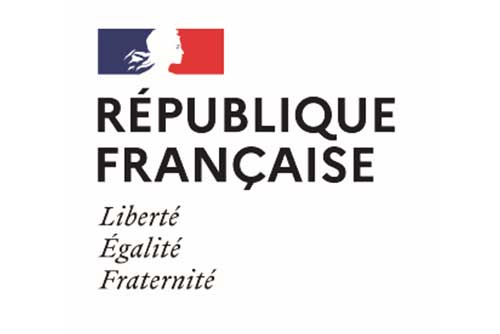After the poor sporting results obtained at the Tokyo Olympics in 1964 (only one gold medal in horse riding obtained by the Catalan Pierre Jonquères d'Oriola), General de Gaulle wanted France to regain its rank as a great nation.
When the International Olympic Committee awarded Mexico City the organization of the 1968 Olympic Games, sports federations around the world looked for training places located at altitudes similar to Mexico City (2300m).
The idea of creating a pre-Olympic training center took shape under the leadership of Maurice Herzog, then Minister of Sports. Several candidate sites were identified: Val d´Isère, Tignes, Barcelonnette and Font-Romeu. They quickly chose Font-Romeu. The altitude of the site (1850 m), weather and latitude (the lowest in France) were decisive in this decision.
The architect Roger Taillibert was chosen to give substance to the project. It took the form of a vast amphitheater, protected from the prevailing winds and wide open on the awe-inspiring panorama of Cerdanya. The architectural proposal was to create a center unity throughout with continuity between the rooms, the catering, the sports and medical facilities in order to avoid wasting time linked to sometimes difficult journeys in winter conditions.
- '>
- '>
- '>
- '>
In February 1967, the brand-new National Center for Altitude Training was inaugurated, and the sports facilities welcomed their first athletes. Pre-Olympic preparation can begin ... The greatest champions, French and international, would there on regularly frequent this site.
France won 15 medals, including 7 gold in 1968.
THE ALTITUDE TRAINING CENTER IS ENRICHED WITH A HIGH SCHOOL AND A SPORTS AND CLIMATE COLLEGE.
Very quickly, the French authorities decided to associate a high school with the Training Center in order to help young French talents succeed in their dual project, sports and education. The first French sports boarding school were set up in Font-Romeu in September 1967. The Pierre de Coubertin College and Lycée Climatique et Sportif welcomes students from the sector and sports scholars from all over France, as well as asthmatic students followed by surrounding health establishments.
All of these young athletes find unique structures there that are suited to their favorite sports and their studies. Since the creation of the training center, hundreds of students have been part of French teams to participate in the Olympic Games as well as other major international competitions.
File prepared by Jean-Claude POUS "From Font-Romeu to Mexico / From Mazerat to the Pre-Olympic City"
[real3dflipbook id="7"]CNEA de FONT-ROMEU, INTERNATIONALLY RENOWNED
Today, the CNEA welcomes high-level athletes from around the world throughout the year. Since 1968, more than 200 athletes who have chosen Font-Romeu for the preparation of major international events have been Olympic medalists.
Created in 2009 close to the National Training center, a Sports University Unit (UFRSTAPS ) allows the students to continue training on the CNEA site while pursuing a university course. “L’EQUIPE”, the national newspaper for sport crowned this exceptional synergy by awarding the title of "France's sportiest city" in 2009 to Font-Romeu.
The town and community involvement are als involved in Font-Romeu’s Sporting Heritage in a complementary way through a dynamic policy by offering other peripheral activities and infrastructures, by supporting the local sports association and by proposing numerous sporting events. In 2018, the CNEA celebrated its 50th anniversary and stands out as a base for Olympic preparation in preparation for the Paris 2024 Olympic Games. All of these young athletes find the singular structures there are suited to their favorite sports and their studies. Since the creation of the training center, hundreds of students have gone on to be part of the French Squad at the Olympics and other major international events.
1963
Many cyclists, boxers, fencers, weightlifters already attend Font-Romeu to prepare for major international events. Among these athletes, Christian Noël was a bronze medalist in foil fencing at the Tokyo Games in 1964.Février 1967
After two years of work, the National Altitude Training Center is inaugurated. The French women's gymnastics team was the first team to come. The wealth of sports facilities (athletics track, 3 stadiums, ice rink, combat room, weapons and shooting room, gymnasium, ...) attracts many national and foreign federations. Pre-Olympic preparation can begin ... The greatest champions, French and international, will there on regularly frequent the site.Septembre 1967
The Altitude Training Center is enriched by a high school.
The first school year welcomes 164 girls and 216 boys, including 90 mild asthmatics and 130 athletes in secondary school. Mr Barragué will be appointed Principal of the mixed climate and sports school in Font-Romeu. The head of the establishment will be assisted by Mr Gérard Garroff and Mr Jean-Claude Pous for all questions relating to the follow-up of the dual sports and educational projects for the athletes. These two executives appointed by the Ministry of Sports will have a staff of 32 agents dedicated solely to the Pre-Olympic City. Their respective commitments and shared visions will play a decisive role in the development and sustainability of the site.1968
France obtains 15 medals, including 7 in gold.
1982
The French Football Team, led by coach Michel Hidalgo and his captain Michel Hidalgo, is preparing for the World Cup at the CNEA in Font-Romeu. The French team will reach the semi-finals, the best performance of the blues since 1958. The World Cup organized in Spain will be won by Italy.1986
The foundation stone for the 50-meter swimming pool was laid on May 03, 1986 by Christian Bergelin, Secretary of State for Sport, thanks to the impetus of "Gérard Garroff". The 50 meters swimming pool bears his name.2009
L’Equipe newspaper crowned this exceptional synergy by awarding the title of "France's sportiest city" in 2009 to Font-Romeu.2016
In application of the law n ° 2015-991 of August 7, 2015 on the new territorial organization of the Republic (NOTRe Law), the OCCITANIE region takes charge of the real estate assets and the running of theses real-estates which have been transferred to it (catering, accommodation, general and technical maintenance). The CREPS entity still welcomes high level athletes for the development of their double project (sporting and educational / professional success). It also participates in the national high level sport network, by working with members of staff to develop youth and elite sport programs.2018
In 2018, the CNEA is celebrating its 50th anniversary and is promoting itself as a base for Olympic preparation in preparation for the 2024 Olympic Games.2019
The Occitanie Region is funding the renovation of the athletics track. A new building is being opened in August 2019 to accommodate national and international delegations.









